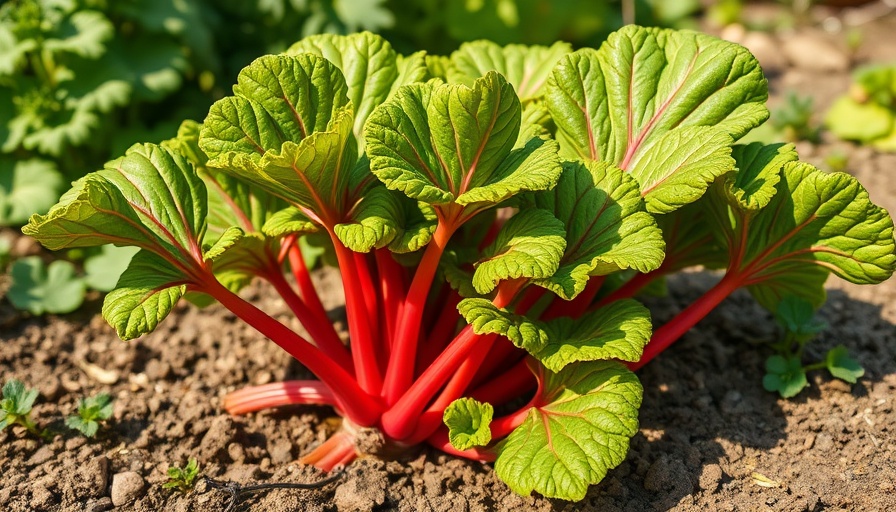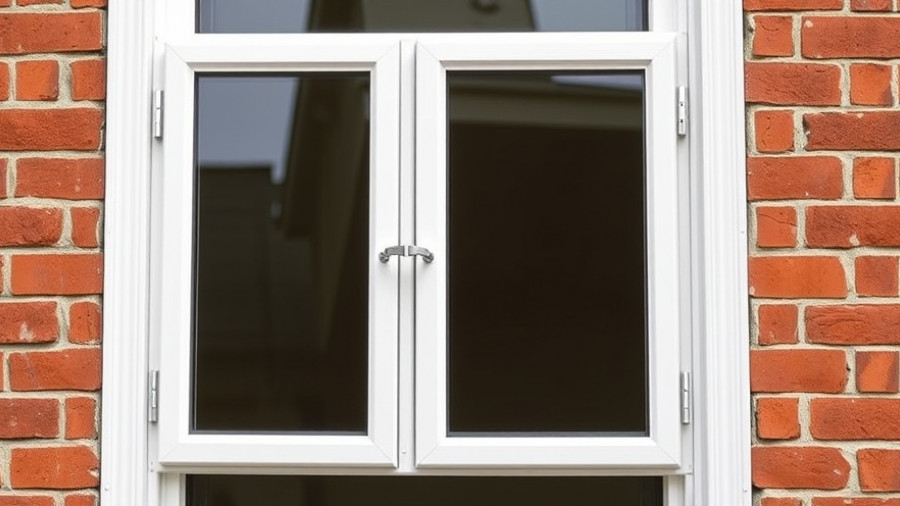
Unlocking the Secrets of Rhubarb Harvesting for Gardeners
Rhubarb is more than just a perennial vegetable; it's a vibrant addition to any home garden. Renowned for its tangy flavor that enriches pies, jams, and sauces, it offers gardeners both beauty and utility. As you cultivate this hardy plant, understanding the correct harvesting techniques is crucial to ensure it lives on for many seasons to come. Whether you're a novice or a seasoned gardener, following a few fundamental steps can help you enjoy a bountiful rhubarb harvest.
Choose the Right Timing for the Best Flavor
Timing is everything when it comes to harvesting rhubarb. For those whose plants are newly established, patience is key. According to Laura Irish-Hanson from the University of Minnesota Extension, it's advisable to wait until the third year before your first complete harvest. This allows the plant to grow vigorously and develop a strong crown, which will reward you with a healthier yield.
In most climates, you can start to see the signs of readiness between April and May. As a gardener, keep an eye on the size of the leaves, which should ideally be 18 to 24 inches wide before you start picking. Interestingly, color is not the best indicator of readiness—some varieties blossom into deep red stalks while others emerge in speckled or green tones. Always assess the firmness of the stalks for the best quality.
The Right Technique: Harvesting Like a Pro
No need for sharp tools when harvesting rhubarb! The best way to collect these stalks is by hand. Grasp the base of the petiole—this is the stalk we consume—and give it a gentle twist. This method ensures that you avoid creating significant wounds on the plant, which helps it preserve its vitality and prevent disease.
Once you've pulled the stalk, don’t forget to cut off the leaves promptly and dispose of them correctly, as they are toxic. It's crucial to only harvest one-third to half of the plant per season so it can continue to grow and flourish. Keeping at least half intact allows the plant to photosynthesize and gather the energy it needs for a fruitful return next year.
Best Practices for Sustaining Health Year-Round
Adhering to proper harvesting practices can make a remarkable difference in the long-term health of your rhubarb. Avoid harvesting during the summer months; the stalks tend to become tougher and woodier as temperatures rise, which can affect taste and quality. Another tip: ensure your plants are well-fed! Rhubarb tends to be a heavy feeder, requiring regular fertilization. Providing the right nutrients can lead to more robust growth and increased yields.
Maintaining Your Rhubarb Garden: Beyond Harvesting
As any experienced gardener knows, the care doesn’t stop at harvesting. After you've gathered your rhubarb, focus on nourishing your garden soil. Incorporating organic matter or a balanced fertilizer in early spring can significantly boost plant health throughout the growing season. Additionally, consider companion planting; rhubarb thrives when paired with plants like ground cherries or even marigolds, which help deter pests.
For those who may worry about pesky insects or diseases, recognize that rhubarb generally offers good resistance. However, maintaining an eye on plant health and adapting practices can enhance your gardening strategy and prolong the lifecycle of your rhubarb beds.
Frequently Asked Questions: Clarifying Common Concerns
Many gardeners have questions when it comes to rhubarb. Here are some frequently asked questions:
- When is the best time to harvest? The ideal time is during the spring, once leaves have reached full size.
- Can I harvest rhubarb before the third year? It's best to wait until the plant is at least three years old for optimal health.
- What should I do with the leaves? Always discard them as they are toxic; consider composting them to enrich your soil safely.
By understanding these nuances of rhubarb care and harvest, you’re well-equipped for a rewarding gardening experience that brings nature’s best flavors to your kitchen.
 Add Row
Add Row  Add
Add 




Write A Comment